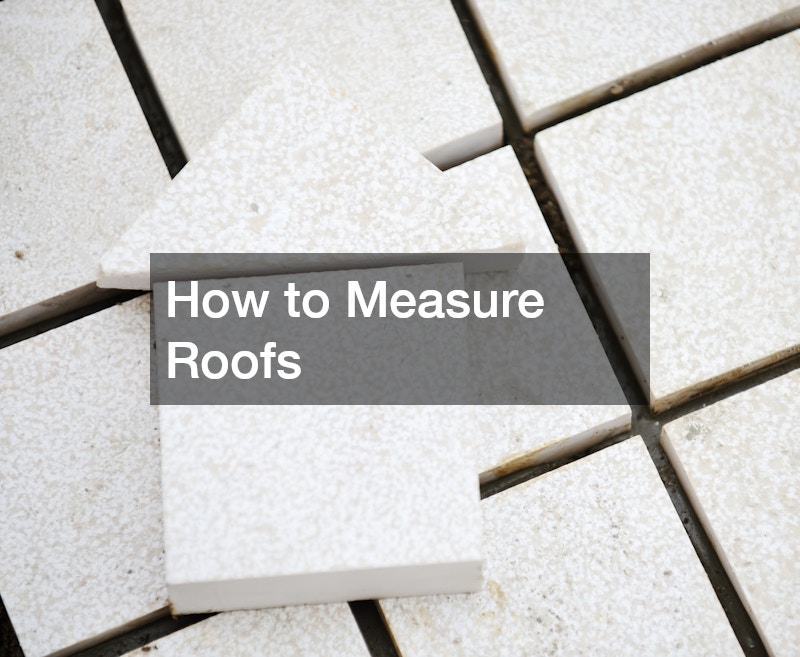Estimating and measuring roofs accurately is crucial for ensuring that you have the right amount of materials and for making informed decisions about repairs or replacements. Whether you’re a homeowner planning a DIY project or a professional roofer, understanding how to measure a roof will save you time, money, and effort. This guide will walk you through the steps to estimate and measure roofs efficiently.
Understanding Roof Geometry
Before diving into the measurement process, it’s essential to understand the basic geometry of your roof. Roofs come in various shapes and sizes, including gable, hip, mansard, and flat roofs.
Each type has unique features that affect how you measure them.
A gable roof has two sloping sides that form a triangular shape. A hip roof has slopes on all four sides, converging at the top. Mansard roofs have two slopes on each side, with the lower slope being steeper than the upper one. Flat roofs are, as the name suggests, flat and easy to measure but often require more precise calculations for drainage.
Tools You’ll Need
To measure a roof accurately, you’ll need some essential tools:
- Measuring tape or laser distance measurer
- Roof pitch finder
- Ladder
- Calculator
- Notepad and pencil
Step-by-Step Guide to Measuring Your Roof
1. Measure the Length and Width
Start by measuring the length and width of your house at ground level. If your roof has overhangs (eaves), include these in your measurements. You can do this by measuring from one end of the house to the other, including any extensions or protrusions.
2. Calculate the Roof Pitch
The pitch of your roof is its steepness, which you can determine using a roof pitch finder. Place the pitch finder on your roof and read the angle. Roof pitch is typically expressed as a ratio of the vertical rise to the horizontal run (e.g., 4:12, 6:12). This information is crucial for calculating the actual surface area of the roof.
3. Determine the Roof’s Total Square Footage
To find the roof’s total square footage, use the length and width measurements you took earlier. Multiply the length by the width to get the area of one side of the roof. If your roof is a gable roof, multiply this number by two to account for both sides. For other roof types, you’ll need to adjust your calculations based on the specific geometry.
For example, a simple gable roof with a length of 40 feet and a width of 20 feet would have an area of 800 square feet per side. Since there are two sides, the total area is 1,600 square feet.
4. Adjust for Roof Pitch
Since roofs are not flat, you need to adjust for the pitch to get an accurate measurement of the actual surface area. Use the following formula:
Actual Roof Area = Total Square Footage x (Roof Pitch / 12)
For instance, if your total square footage is 1,600 and your roof pitch is 6:12, the actual roof area calculation would be:
Actual Roof Area = 1,600 x (6 / 12) = 1,600 x 0.5 = 800 square feet
This adjustment helps account for the increased surface area due to the slope.
5. Calculate Additional Areas
If your roof has dormers, valleys, or other complex features, measure these separately and add their areas to your total roof area. Dormers and valleys can significantly increase the amount of material needed, so accurate measurement is crucial.
6. Account for Waste
When purchasing roofing materials, always account for waste. It’s recommended to add an extra 10-15% to your total roof area to ensure you have enough materials for cuts, mistakes, and overlapping.
Hiring Professional Roofers
If you’re uncomfortable with measuring your roof or if the roof is too complex, consider hiring professional roofers. They have the experience, tools, and expertise to measure and estimate your roof accurately. This can save you from potential miscalculations and ensure your roofing project is completed efficiently.
Conclusion
Estimating and measuring your roof correctly is the foundation of any successful roofing project. By following these steps, you can ensure you have the right amount of materials and avoid unnecessary expenses. Whether you’re doing it yourself or hiring professionals, understanding the process will help you make informed decisions and achieve the best results for your roofing needs.
.



